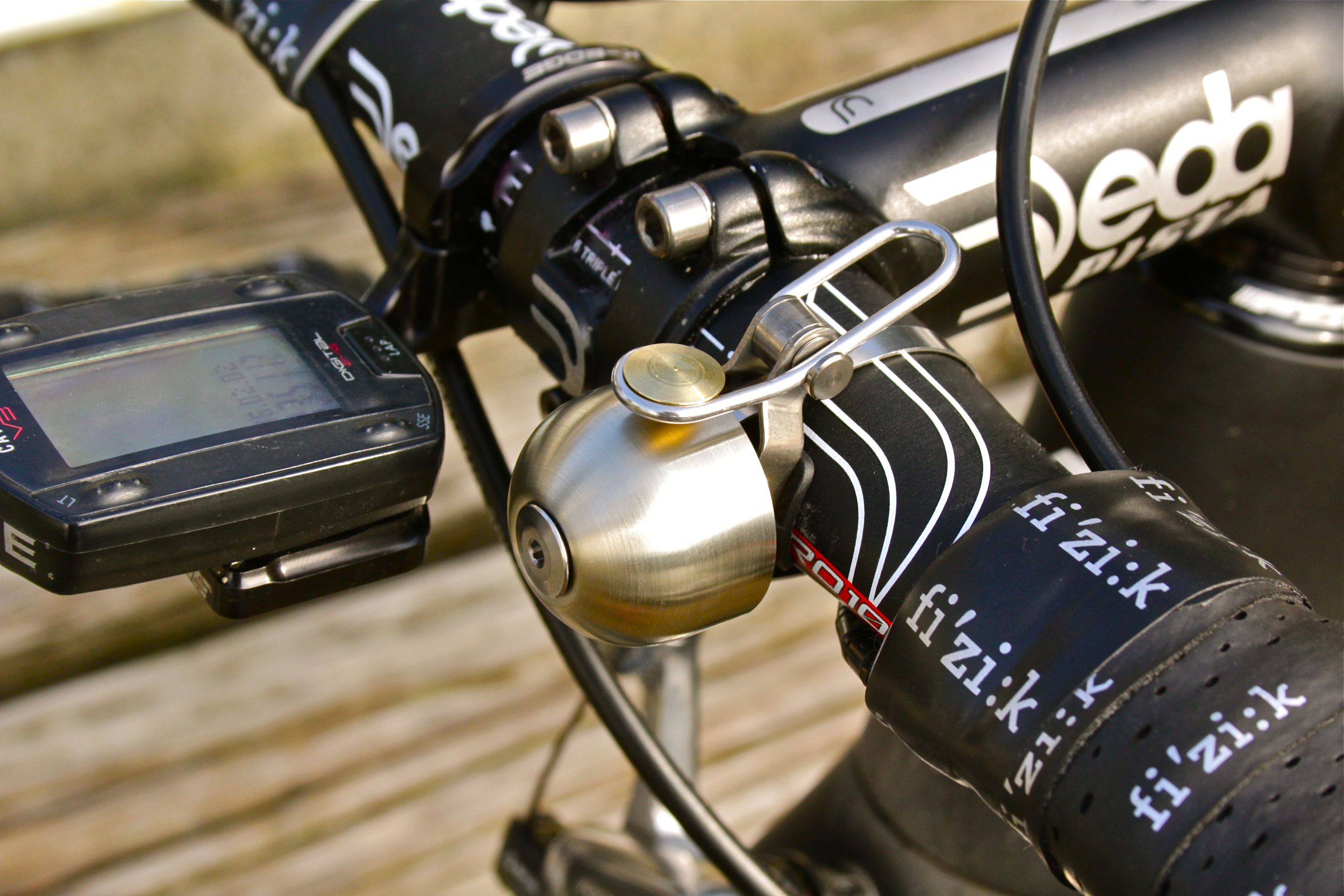Mark V reviews: Spurcycle Bell

Since the frameshop at which I work moved from downtown to the Fremont neighborhood of Seattle, my commute is largely confined to the bike paths. Instead of sprinting for yellow traffic signals and drag-racing automobiles off the line, I face the surprisingly difficult task of negotiating my way through pedestrians, strollers, slower cyclists, and the occasional Elliptigo, all while trying to maintain the facade of being a responsible and considerate member of society. What is needed is a way to politely and effectively communicate my presence and intentions at a distance, and few things do that as well as a bell. Not all bells are the same however. And not to be a snob, but each of my bikes represents serious money and planning. I am not about to zip tie a cheap apology for a ringer on my handlebar. On the other hand, I am not actually immune to the costs of bicycle products, even if I work in the industry. I will pay good money for something, but it must be convincingly better than the norm.
I say this because when the topic of Spurcycle’s bell comes up, half of the people indignantly complain about the $50 price for a bell. And that’s a legitimate objection…if to you a bell is but a bell. But make no mistake. This bell is objectively better than others when the criteria calls for small, loud, and physically unobtrusive. Spurcycle achieves this by carefully crafting each component of the bell with the goal of producing a commanding sound from a tiny metal device. The bell has a loud, bright tone with an amazingly long sustain, and the firm action of the bell’s striker allows for rapid ringing if you need to communicate greater urgency. There are other bells on the market for less money, but none are quite as competent the Spurcycle, or at least not without being at least three times larger. And as much as I love the nostalgic looks and joyous sound of a Crane Riten bell, I’m never going to bolt such a big brass bulk onto a 15-lb carbon road bike.
At just 49gr, the Spurcycle is suitably light, but even better in my eyes is how little space it takes up on the handlebar. The Spurcycle is secured by means of a stainless steel band, two sizes of which are provided for diameters up to 26mm and up to 36mm. This allows you to mount the Spurcycle in a variety of positions such as next to the brake lever on a mountainbike (22.2mm) or beside the stem of a road bike…even if you had one of those 35mm Deda Elementi bars. I suppose you could mount it over the headset spacers below the stem, assuming you hadn’t slammed the stem. Personally, I like mine mounted on the bar, next to the stem….the dome of the bell facing forward like the nose of a sonic missile. Honestly, it looks rather cool like that; the Spurcycle will do no injustice to the aesthetics of a bicycle.
A bicycle bell is one of the simplest devices made since the Industrial Revolution, yet there is nothing else on the horizon likely to replace it. In my opinion, paying $450 for a premium bicycle pump is ridiculous when you can buy an air compressor for a third of that price and have the actual capability of mounting tubeless tyres, or you could get a $60 cordless inflator like the modern professional team mechanics use. But there is no high-tech replacement for a bell, no app for your iPhone to warn people 10 to 50M away that you and they will soon share the same space/time coordinates. The Spurcycle puts the greatest performance in the smallest of forms. No novelty 3D printing, just thoughtful design and careful craftsmanship of honest metal, entirely made in the US of A.